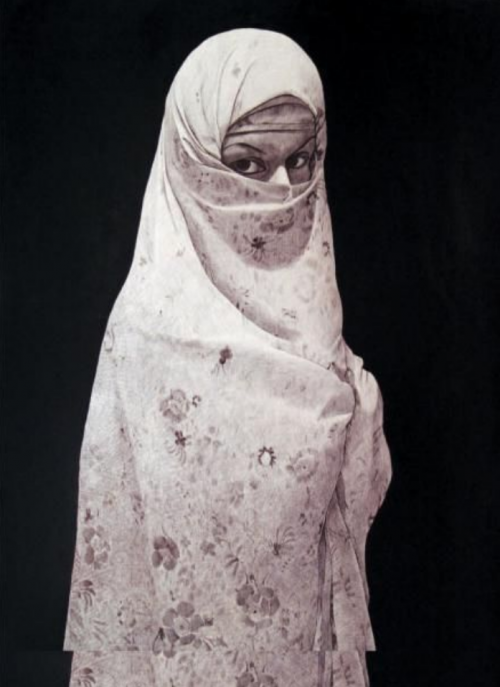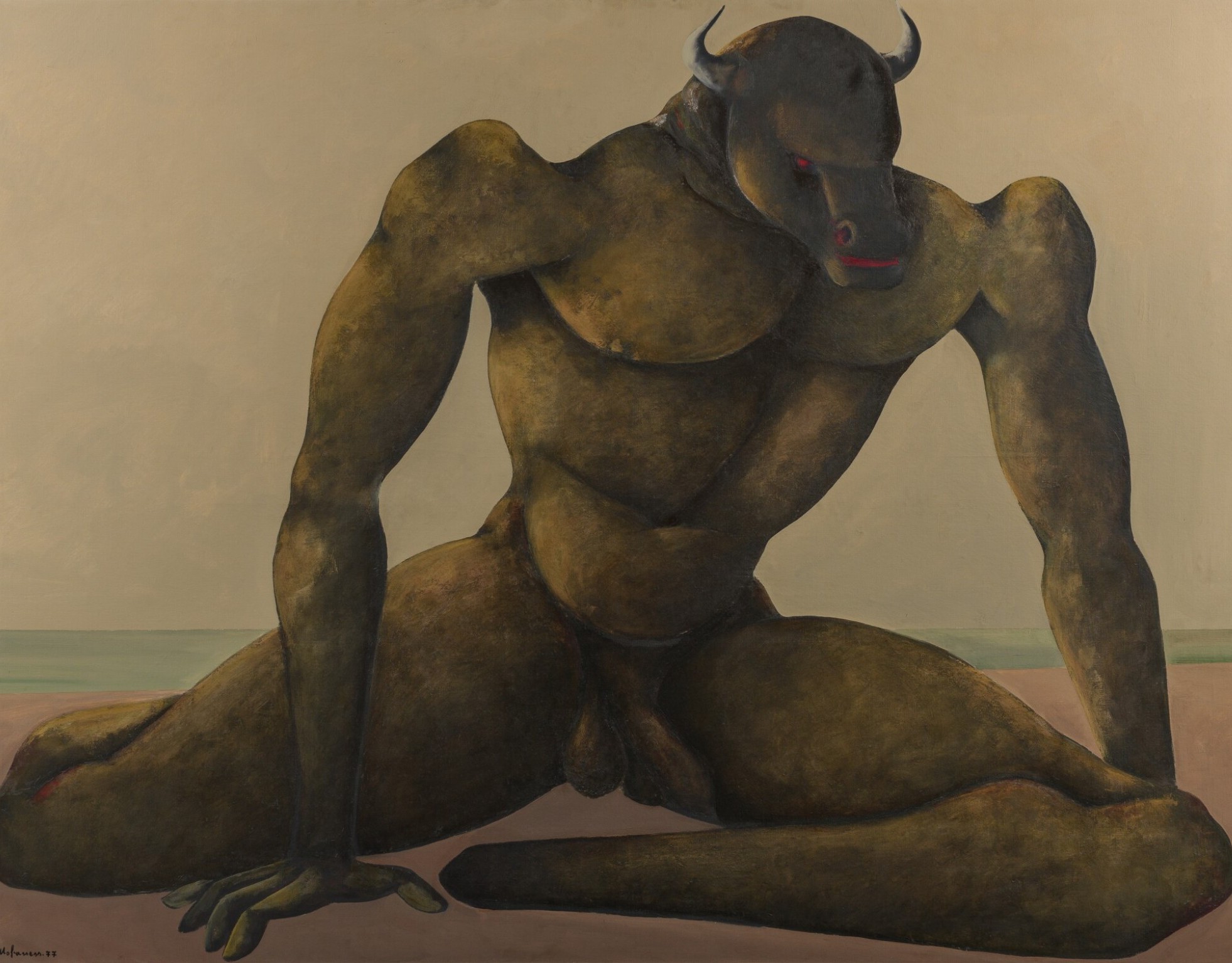About Ahmad Morshedloo
Ahmad Morshedloo is known for his realistic and social paintings and drawings. Morshedloo began his art education at the Boys' Visual Arts Academy. After that, he entered the Islamic Azad University, continued his painting studies, and completed his postgraduate studies at the Tehran University of Arts.
He exhibited his artworks for the first time in 2001 in the Azad Art Gallery, Tehran. His first international appearance was in 2006 at the Museum of Modern Art in Freiburg, and in 2015 he participated in the Venice Biennale with the painting "The Big Game". His presence in the Pergamon Museum in Berlin, the Art Fair in Moscow, the Metropolitan Museum of Tokyo and France, the Mehr Gallery in New York, and the James Gray Gallery in Los Angeles can be seen in his prolific international career, and his works are in prestigious world collections such as the Metropolitan Museum of New York, Saatchi London and Ayyam Gallery Dubai.
He exhibited his artworks for the first time in 2001 in the Azad Art Gallery, Tehran. His first international appearance was in 2006 at the Museum of Modern Art in Freiburg, and in 2015 he participated in the Venice Biennale with the painting "The Big Game". His presence in the Pergamon Museum in Berlin, the Art Fair in Moscow, the Metropolitan Museum of Tokyo and France, the Mehr Gallery in New York, and the James Gray Gallery in Los Angeles can be seen in his prolific international career, and his works are in prestigious world collections such as the Metropolitan Museum of New York, Saatchi London and Ayyam Gallery Dubai.
The starting point of his work is based on the ideas of socialist realism. He seeks to revive the concept of realistic art that addresses the social concerns and issues of the lower classes. But in this way, it goes beyond this method's orthodox and dogmatic coordinates and opens new horizons for this form of realism. In this way, on the one hand, in his artworks, he gives extra weight to formal issues; This excess is evident in the sharp cuts of the sidelines of the face and its components, as well as the metallic texture that it automatically creates in the skin of the bodies. On the other hand, combining and accompanying the elements deviates from the objective dry logic and moves towards a symbolic and poetic expression. Nevertheless, his paintings continue to commit to a higher definition of reality subject to his political and social concerns.
Although Morshedloo often uses his family, friends, and relatives to create his paintings, in the end, these figures do not remain personal and family images and are generalized to a public image representing the ordinary and inferior people of Iran. Protruding and fat sides, buttocks, wrinkled faces, fleshy spots, and large noses. Regular and everyday clothes.
The bodies Morshedloo makes the subject of his work do not meet the usual beauty standards. Like Courbet, he places ordinary people on the street and in the bazaar as the central theme of his career. Those who have little to do with the formal rules of art: "I am the voice of the silent class from which I come. My people do not stand behind the museums' doors, they do not walk in the galleries' corridors, and they do not open their eyes to shake a hand behind a window. My audience has a hard job and is looking for bread. "I wish the gallery was a more popular arena, and the media would take our voices from the corridors and graveyards of unaddressed works of art to the streets."
The bodies Morshedloo makes the subject of his work do not meet the usual beauty standards. Like Courbet, he places ordinary people on the street and in the bazaar as the central theme of his career. Those who have little to do with the formal rules of art: "I am the voice of the silent class from which I come. My people do not stand behind the museums' doors, they do not walk in the galleries' corridors, and they do not open their eyes to shake a hand behind a window. My audience has a hard job and is looking for bread. "I wish the gallery was a more popular arena, and the media would take our voices from the corridors and graveyards of unaddressed works of art to the streets."
The Most Expensive Artwork
At Auctions
First Attendance
29 April 2009
# Attendance
22
# Artworks
27
Average Realized Price
11,028 USD
Average Min Estimate
9,760 USD
Average Max Estimate
13,341 USD
Sell-through Rate
69.231%
Average Growth of Artwork Worth
9.193%
Timeline
Arab, Iranian & Turkish Art / Modern & Contemporary Middle Eastern Art | N°22 auction
15 December
Ahmad Morshedloo Paintings exhibition
29 August
Shifting Gazes: Women Through Middle Eastern Eyes exhibition
15 April
Exhhibiting 7 Works from Liam Gallery's Collection The Fifth Scene : Ahmad Morshedloo exhibition
27 December
… And Poetry Will No Longer Serve exhibition
15 November
Ahmad Morshedloo Artworks exhibition
27 September
Fast Forward 4 exhibition
21 June
New Year/ New Vision exhibition
23 February
The 18th Tehran Contemporary Art auction
12 December
Process exhibition
10 November
Recovery 04 exhibition
8 September
Crossing Modern Boundaries exhibition
1 September
Human Body exhibition
25 August
Antifragile Human exhibition
4 August
Middle Eastern Modern and Contemporary Part II auction
20 December
Treasure 1 exhibition
22 July
Golestan exhibition
20 May
Group Exhibition Nasut and Nature 2 exhibition
13 May
Nowruz Festival of Rivers exhibition
10 March
Last Chapter exhibition
25 February
Point Of View exhibition
25 February
The First Fertile Element exhibition
18 February
Opportunity exhibition
13 February
The 14th Tehran- Contemporary Iranian Art auction
12 August
Summer Selection exhibition
30 July
The Collection of Liam Gallery exhibition
20 May
Trends and Approaches 3 exhibition
26 February
Ghaf exhibition
27 November
Collector 6 exhibition
18 September
White Black Gray exhibition
13 December
Cama Chain exhibition
1 November
Forty - Fifty - Sixty exhibition
21 June
Neo-expressionism in Iranian Contemporary Art exhibition
10 May
Foad Sharifi Print Makings exhibition
12 April
2018 Collection Selling exhibition
17 January
دهمین دوره حراج تهران auction
11 January
Null exhibition
28 December
Influence exhibition
9 November
Crisis exhibition
16 February
Shabtab 3 exhibition
31 January
هشتمین دوره حراج تهران auction
12 January
Eye That Sees exhibition
12 May
The 6th Tehran- Contemporary Iranian Art auction
23 December
The Winter Experience exhibition
10 June
سومین دوره حراج تهران auction
30 May
Negative Space exhibition
25 April
Islamic and Indian Art auction
8 April
دومین دوره حراج تهران auction
28 May
The Young Collectors - Art from the Middle East auction
30 April
1Ere Vente a Dubai International Modern And Contemporary Art auction
22 October
اولین دوره حراج تهران auction
22 May
Modern and Contemporary Arab, Iranian and Turkish Art Part II auction
26 October
Contemporary Art / Arab & Iranian auction
20 October
In & Out exhibition
24 February
International Modern & Contemporary Art auction
27 October
Modern & Contemporary Middle Eastern & South Asian Art auction
12 October
Modern & Contemporary Middle Eastern & South Asian Art auction
3 June
International Modern & Contemporary Art auction
29 April
Articles
Iranian Art in London; In a Commercial and Non-commercial Relationship 10 June 2024
The expansion of the Middle Eastern art market beyond the region, particularly to a city like London, has been influenced by numerous factors. One of the earliest and most significant reasons is the entry of well-known British auction houses, such as Christie's and Bonhams, into the Middle East in 2004 and 2005, respectively. While the attention of international auction houses to th...

